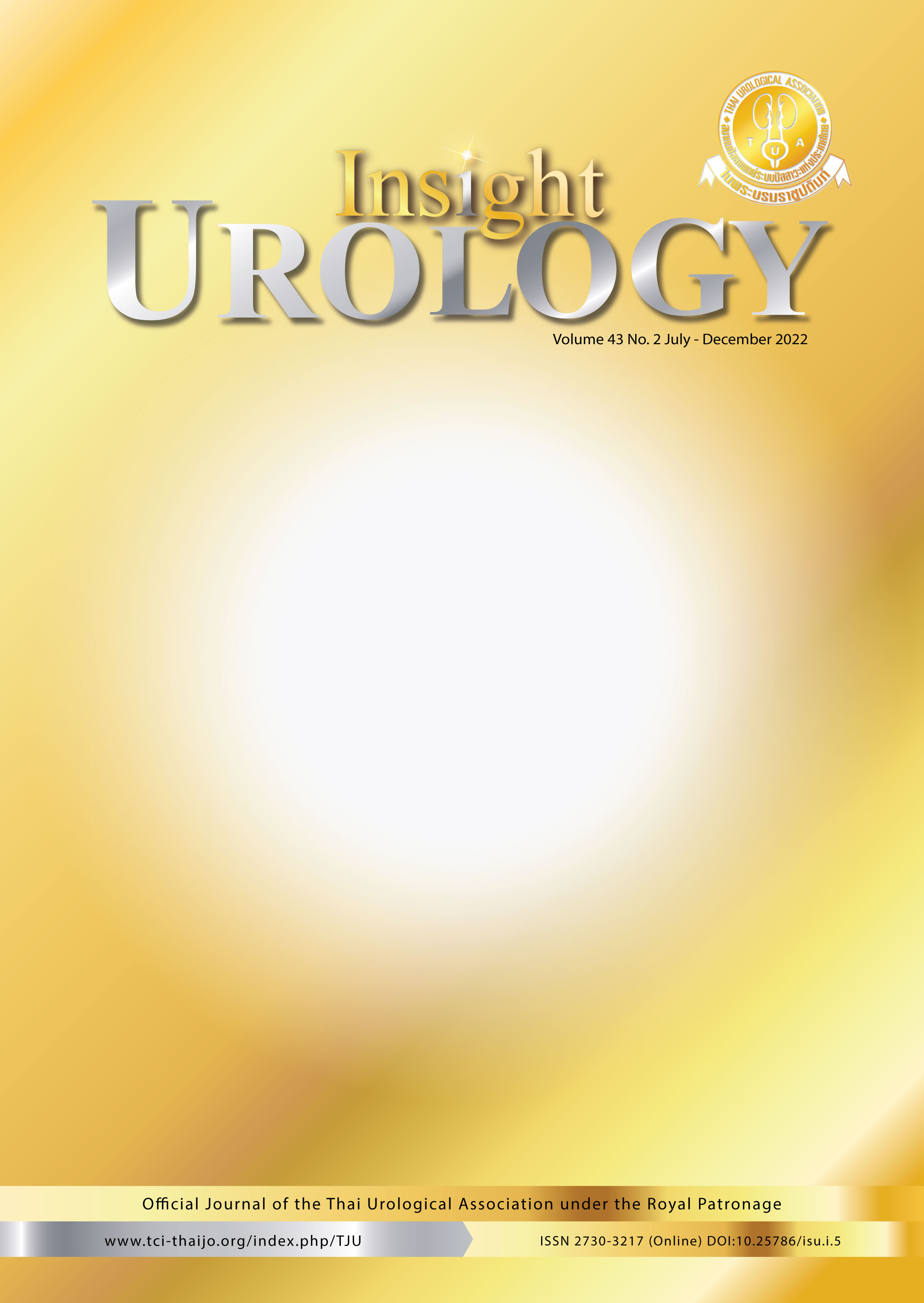3D Fluoroscopic imaging facilitates reconstruction of common urogenital sinus and cloacal anomalies
DOI:
https://doi.org/10.52786/isu.a.62Keywords:
Urogenital sinus, persistent cloaca, surgical planning, three dimensional imaging, three dimensional rotational fluoroscopyAbstract
Cloacal anomalies and common urogenital sinus are rare structural abnormalities in hindgut and urogenital development. Surgical correction in childhood is often indicated to create normal external genital anatomy, allow for adequate bladder and vaginal drainage, and create the appropriate anorectal opening in patients with persistent cloaca.
Understanding the anatomy and relationships between the pelvic organs is critical as there is a drastic variation in potential surgical approaches to the repair. Traditional imaging modalities such as pelvic ultrasound, magnetic resonance imaging, and two-dimensional fluoroscopic imaging have been utilized to delineate the pelvic anatomy for facilitation of surgical planning. Limitations to these modalities include the inability to adequately dilate structures and the difficulty in identifying the common confluence, or where the structures ultimately coalesce within the pelvis.
In this article we describe the utilization of three-dimensional rotational fluorosco- py in combination with examination under anesthesia to provide optimal clarity of anatomy. Examination under anesthesia, specifically cystoscopy and vaginoscopy, helps the surgeon to visualize the anatomy and to place catheters in the correct lumens. Contrast material can then be injected into the catheters to dilate the bladder, vagina, and mucous fistula for fluoroscopic imaging. The rotational images can then be reconstructed in three dimensions to create a roadmap for the surgeons, providing accurate description of the location of the confluence, distance to the introitus and other critical measurements.
We believe that three-dimensional rotation fluoroscopy is an underutilized diagnostic modality in the evaluation and surgical planning in patients with urogenital sinus and cloacal anomalies and should be considered by surgeons prior to proceeding with corrective surgery.
References
Thomas D. The embryology of persistent cloaca and urogenital sinus malformations. Asian J Androl 2020;22:124-8.
Thomas DFM. The embryology of persistent cloaca and urogenital sinus malformations. Asian J Androl 2020;22:124-8.
Valentini AL, Giuliani M, Gui B, Laino ME, Zecchi V, Rodolfino E, et al. Persistent Urogenital Sinus: Diagnostic Imaging for Clinical Management What Does the Radiologist Need to Know? Am J Perinatol 2016;33:425-32.
Li Y, Sinclair A, Cao M, Shen J, Chuodhry S, Botta S, et al. Canalization of the urethral plate precedes fusion of the urethral folds during male penile urethral development: The double zipper hypothesis. J Urol 2015;193:1353-9.
Lottman H, Thomas DFM. Disorders of sex development. In: Thomas DFM, Duffy PG, Rickwood AMK (editors). Essentials of Paediatric Urology. 2nd ed. London: CRC Press; 2013. p. 289-308.
Jesus VM, Buriti F, Lessa R, Betania M, Toralles MB, Oliveira LB, Barroso Jr U. Total urogenital sinus mobilization for ambiguous genitalia. J Pediatr Surg 2018;53:808-12.
Winkler NS, Kennedy AM, Woodward PJ. Cloacal Malformations. J Ultrasound Med 2022;31:1843-55.
Bischoff A. The surgical treatment of cloaca. Semin Pediatr Surg 2016;25:102-7.
Leslie JA, Cain MP, Rink RC. Feminizing genital reconstruction in congenital adrenal hyperplasia. Indian J Urol 2009;25:17-26.
Peña A. Total urogenital mobilization - An easier way to repair cloacas. J Pediatr Surg 1997;33:263-8.
Rink RC, Metcalfe PD, Kaefer MA, Casale AJ, Meldrum KK, Cain MP. Partial urogenital mobilization: a limited proximal dissection. J Pediatr Urol 2006;2:351-6.
Taori K, Krishnan V, Sharbidre KG, Andhare A, Kulkarni BR, Bopche S, et al. Prenatal sonographic diagnosis of fetal persistent urogenital sinus with congenital hydrocolpos. Ultrasound Obstet Gynecol 2010;36:641-3.
Geifman-Holtzman O, Crane SS, Winderl L, Holmes M. Persistent urogenital sinus: prenatal diagnosis and pregnancy complications. Am J Obstet Gynecol 1997;176:709-11.
Rohrer L, Vial Y, Hanquinet S, Tenisch E, Alamo L. Imaging of anorectal malformations in utero. Eur J Radiol 2020;125:108859.
Gul A, Yildirim G, Gedikbasi A, Gungorduk K, Ceylan Y. Prenatal ultrasonographic features of persistent urogenital sinus with hydrometrocolpos and ascites. Arch Gynecol Obstet 2008;278:493-6.
Lin XY, Xu XH, Yang YP, Wu J, Xian X, Chen X. Preoperative evaluation of persistent cloaca using contrast-enhanced ultrasound in an infant. Med Ultrason 2020;22:250-2.
Chavhan GB, Parra DA, Oudjhane K, Miller SF, Babyn PS, Salle FLP. Imaging of ambiguous genitalia: classification and diagnostic approach. Radiographics 2008;28:1891-904.
Kitta T, Kakizaki H, Iwami D, Tanda K. Successful bladder management for a pure urogenital sinus anomaly. Int J Urol 2004;11:340-2.
Kraus SJ, Levitt MA, Peña A. Augmented-pressure distal colostogram: the most important diagnostic tool for planning definitive surgical repair of anorectal malformations in boys. Pediatr Radiol 2018;48:258-69.
Tofft L, Salö M, Arnbjörnsson E, Sternstron P. Accuracy of pre-operative fistula diagnostics in anorectal malformations. BMC Pediatr 2021;21:283.
Ryu JA, Kim B. MR imaging of the male and female urethra. Radiographics 2001;21:1169-85.
Antonov NK, Ruzal-Shapiro CB, Morel KD, Millar WS, Kashyap S, Lauren CT, et al. Feed and Wrap MRI Technique in Infants. Clin Pediatr (Phila) 2017; 56:1095-103.
Reck-Burneo CA, Lane V, Bates DG, Hogan M, Thompson B, Gasior A, et al. The use of rotational fluoroscopy and 3-D reconstruction in the diagnosis and surgical planning for complex cloacal malfor- mations. J Pediatr Surg 2019;54:1590-4.
Patel MN. Use of rotational fluoroscopy and 3-D reconstruction for pre-operative imaging of complex cloacal malformations. Semin Pediatr Surg 2016;25:96-101.
Smith-Bindman R, Lipson J, Marcus R, Kim KP, Mahesh M, Gould R, et al. Radiation Dose Associated with Common Computed Tomography Examinations and the Associated Lifetime Attributable Risk of Cancer. Arch. Intern. Med. 2009;169:2078-86.
Downloads
Published
How to Cite
Issue
Section
License
Copyright (c) 2022 Insight Urology

This work is licensed under a Creative Commons Attribution-NonCommercial-NoDerivatives 4.0 International License.



